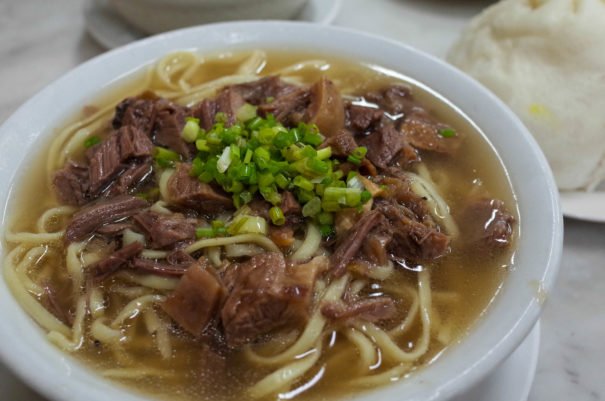
The Best Medicinal Noodles in the World’s Oldest Chinatown

The Best Medicinal Noodles in the World’s Oldest Chinatown
Egg Noodles in Manila
“Is this your first time?” I ask my friend as he looks blankly at the board. The menu looks as old as the Dead Sea scrolls. The food has not changed since the restaurant’s inception. The red acrylic letters on the sign are sparse and unmoving. The price slots are movable and filled with handwritten rates on paper—prices which have increased exorbitantly since my last visit.
The floor is slick and the 1940s-era fans are full of dust, as if time stood still.
A waiter in a one-size-fits-all-uniform arrives with a bored look on his face.
“The place smells funny,” G says.
Chinese egg noodles often come with a distinct smell of ammonia that some find off-putting. There has been much debate through the decades about why they smell like this, and the mystery adds to the experience.
The interior of the restaurant is uninspiring; G can hardly believe that this is, in fact, the birthplace of the Philippine mami—a hearty noodle soup with cuts of meat. We watch the kitchen door swing open, servers rushing out with large white porcelain bowls filled with hot soup.
The neighborhood of Binondo, in the city of Manila, was established in 1594 by Spanish colonizers to keep the Chinese immigrants in check. It is the world’s oldest Chinatown. The word Binondo is derived from the local Tagalog word binundok, or mountainous, referring to Binondo’s then-hilly terrain. It was the center of commerce, trade, and good food. Now, it has seen better days.
The restaurant’s founder, Ma Mon Luk, was born in Guangdong. He left his life as a teacher in 1918 to try his luck in the Philippines. To earn a living, he peddled his special noodle soup in metal vats attached to a bamboo pole slung over his shoulders. He became popular with the working class and students around Chinatown and Quiapo, Manila. The word mami is the street slang for the famous concoction, combining his first name (ma) with the Chinese name for noodles (mian).
Through hard work, he opened his first restaurant in the 1950s in the heart of the city, making the nourishing and tasty mami famous throughout the country. He died a decade later from cancer. His family have continued the tradition, but only two stores out of six remain. The Filipino love affair with air-conditioned fast-food burger chains has killed many small enterprises.
Our beef noodles arrive, with two steamed pork buns. The meat is tender and melts in the mouth. It has a strong flavor of star anise. The egg noodles are firm and tasty. The chopped scallions and fried garlic are crispy. It brings back fond memories of my grandfather slurping his noodles with gusto.
A bright orange salted duck-egg yolk glistened as I tore into the succulent pork bun.
“How is the broth?” I asked as I dipped a piece of the white bun into the bowl.
“Medicinal, but in a good way,” G laughs.
The soup keeps our hearts pounding and fuels us for the rest of the day.